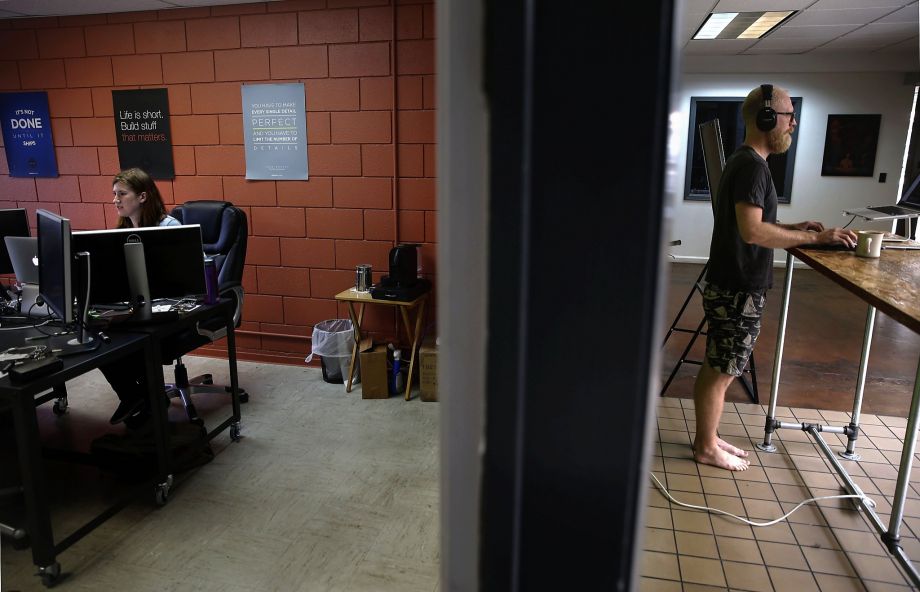By Carolyn Said
San Francisco Chronicle.
People often e-mail Rob Walling to offer him millions of dollars — and they aren’t Nigerian princes. Instead they are venture capitalists who want to explore investing in Walling’s marketing-automation company Drip.
But Walling prefers to go it alone.
“I like building businesses instead of slide decks,” he said, explaining his penchant for growing a company through its own revenue rather than devoting his time to fundraising with PowerPoint presentations.
At a time when most high-tech entrepreneurs dream of VC money, he’s among a cadre of startup founders who prefer the more organic growth and self-determination of funding companies from their revenue. Although they’re geographically dispersed — and largely outside the Bay Area — many collaborate through Slack chats and Google Hangouts, forming “mastermind groups” to share updates and ideas.
“The bootstrapper community never seems to get the big headlines since we aren’t raising tens of millions of dollars, but yet (we) provide a lot of people with six- or seven-figure incomes paired with a true lifestyle freedom,” said Ryan Battles, co-founder of Harpoon, a Columbus, Ohio, company that last week released a financial planning and invoicing app for freelancers.
But Steve Blank, who teaches entrepreneurship at Stanford and UC Berkeley, said outside funding is about a lot more than money.
“Venture capital isn’t just a check to cash,” he said. “It comes with someone with the skills for insights about your business model, great connections to shortcut some of the early (bumps) and hopefully hiring help as well.”
Still, some self-funded startups might simply be among the 99 percent of U.S. companies that are small businesses, Blank said, as opposed to true Silicon Valley startups with the ability to scale massively.
Hiten Shah has seen startups from both sides. Along with Neil Patel, the San Francisco entrepreneur started a self-funded company, Crazy Egg, in 2005, followed by a venture-backed one, KISSmetrics in 2008. Crazy Egg lets websites see heat maps of visitors’ locations while KISSmetrics, which spun out of it, offers more extensive analytics tools about website visitors.
“If you’re self-funded, you grow the business as the money comes in, usually from customers, but it could also be from consulting revenue,” he said. “If you are venture- or seed-funded, you can invest in your business ahead of your revenue, making investments in hiring and marketing, for instance. With self-funding, we were always watching our cash, because if you run out of money, you’re done.”
Still, he said, business fundamentals are the same either way. “Investment is just a vehicle to grow faster,” he said.
buy cialis generic buy cialis online no prescription
The advent of tools like Amazon EC2 for scalable cloud computing makes it easier than ever to build a business on a shoestring, he said.
Walling, who runs twice yearly MicroConf conferences for other self-funded startups, ticks off lots of reasons why he and others eschew the rocket fuel of venture capital: maintaining control of a company and working saner hours, for instance.
Self-funded companies have a higher rate of success simply because the bar is lower, he said. “You don’t have to get to a $50 million or $100 million valuation to succeed. You can build a really nice $1 million to $5 million company.” Longevity is on the list too. “VCs have a time frame. They need liquidity, so expect an exit event (selling a company or going public) within five to eight years.”
Having to live within one’s means is a good exercise, Battles said. “An overabundance of funds can cause lazy thinking, just throwing money at a problem instead of finding a smart solution.”
But there are some clear negatives, too. Growth is slower without cash to hire more staffers or buy advertising. And VC backing provides a kind of Good Housekeeping Seal of Approval. “If you say you raised money from Andreessen Horowitz or another name brand, it lends you legitimacy with potential customers and partners,” Walling said.
There are limits on what kind of companies can self-fund: Those with revenue from the get-go. That typically means startups selling to other businesses. “If you want to start the next Instagram, you are, for the most part, going to need funding,” Walling said.
Location is another prime consideration for self-funded companies. There are only a handful of U.S. cities where companies get funded.
“If you want to live in Nebraska, you’re not going to get funding from Sand Hill Road,” Walling said. “If you don’t have a track record and do get funding from the Bay Area, VCs will almost always require you to move or open an office there.”
Although Walling is from the Bay Area, Drip, now a five-person company, set up shop in Fresno. “Over here you can get employees for half or less of the (Bay Area) price, and we can all buy houses,” he said.
Self-funding advocates point to companies like Basecamp, Mailchimp and Craigslist as examples of bootstrapped enterprises that grew big and succeeded. And there are plenty of others, such as GitHub, that were self-funded for years and eventually took outside investment.
“Bootstrappers aren’t totally against the idea of funding,” Battles said. Instead, many want to self-fund until they refine their businesses and can show profits, at which point they can get funding without relinquishing as much equity. Adding funding “helps them to pour gasoline on their proven growth model,” he said.














































































































































































































































































































































































